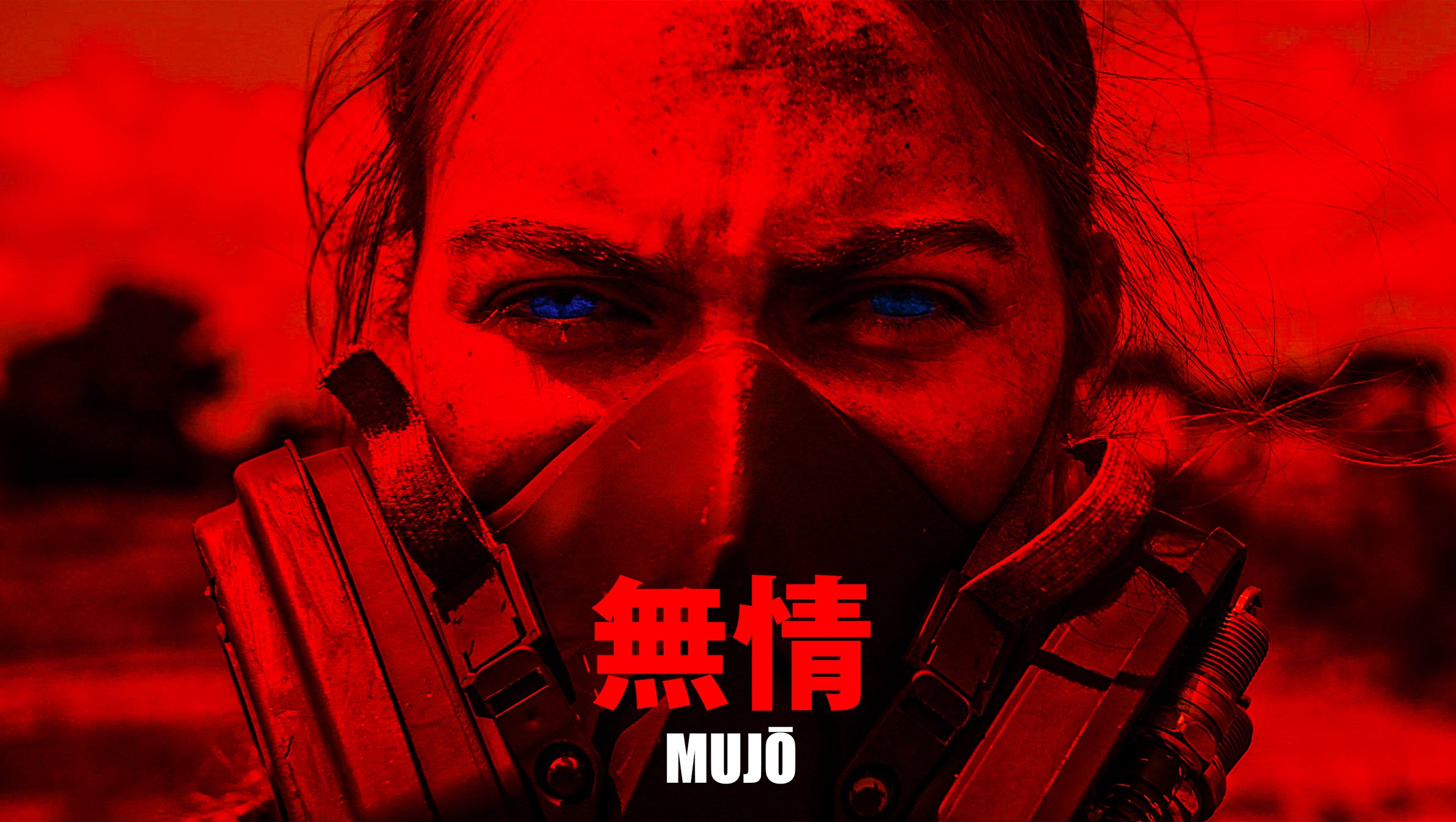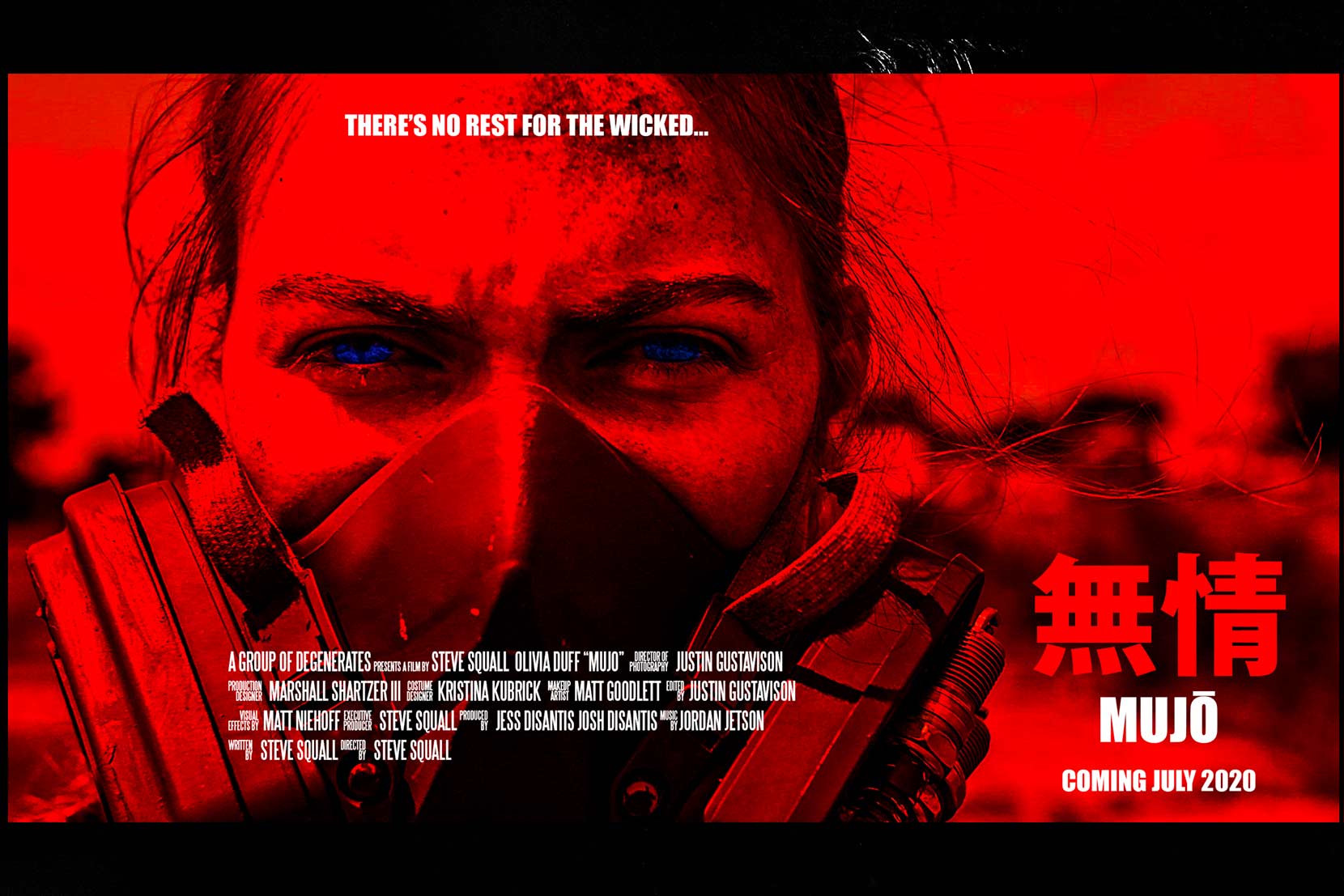The story behind Mujō
«If Mad Max: Fury Road, The Book of Eli and the series "Lost" somehow created a child, it would be the story of Mujō», says Justin Gustavison, Director of Photography and Editor of the sci-fi series. The first episode, starring Olivia Duff as Meta, was released a few days ago, and we are thrilled!
Justin, you are the Director of Photography and Editor of Mujō. How would you explain the story and the world in which Meta lives to someone who hasn't seen the film yet?
Justin (gustafilms): I always tell people that if Mad Max: Fury Road, The Book of Eli and the series “Lost” somehow created a child, it would be the story of Mujō. Only Mujō would grow up to making sense in the end (unlike ‘Lost”). The story of Mujō hits a very personal chord with me. The story seems to take pieces of just about every type and genre of film that I love, Sci-fi, fantasy, action, adventure, mystery, the story has everything I grew up loving about cinema.
«Mujō is one of those shows where you will be dissecting and discussing it the next day at work with your co-workers in anticipation for the next episode.»
This is more than just another post-apocalyptic adventure. What sets Meta’s world apart from other post-apocalypse worlds is that it’s a hell of a lot more complex and mysterious. Just when you think you understand how the world works, we throw a curve ball that flips everything upside down. Mujō is one of those shows where you will be dissecting and discussing it the next day at work with your co-workers in anticipation for the next episode.
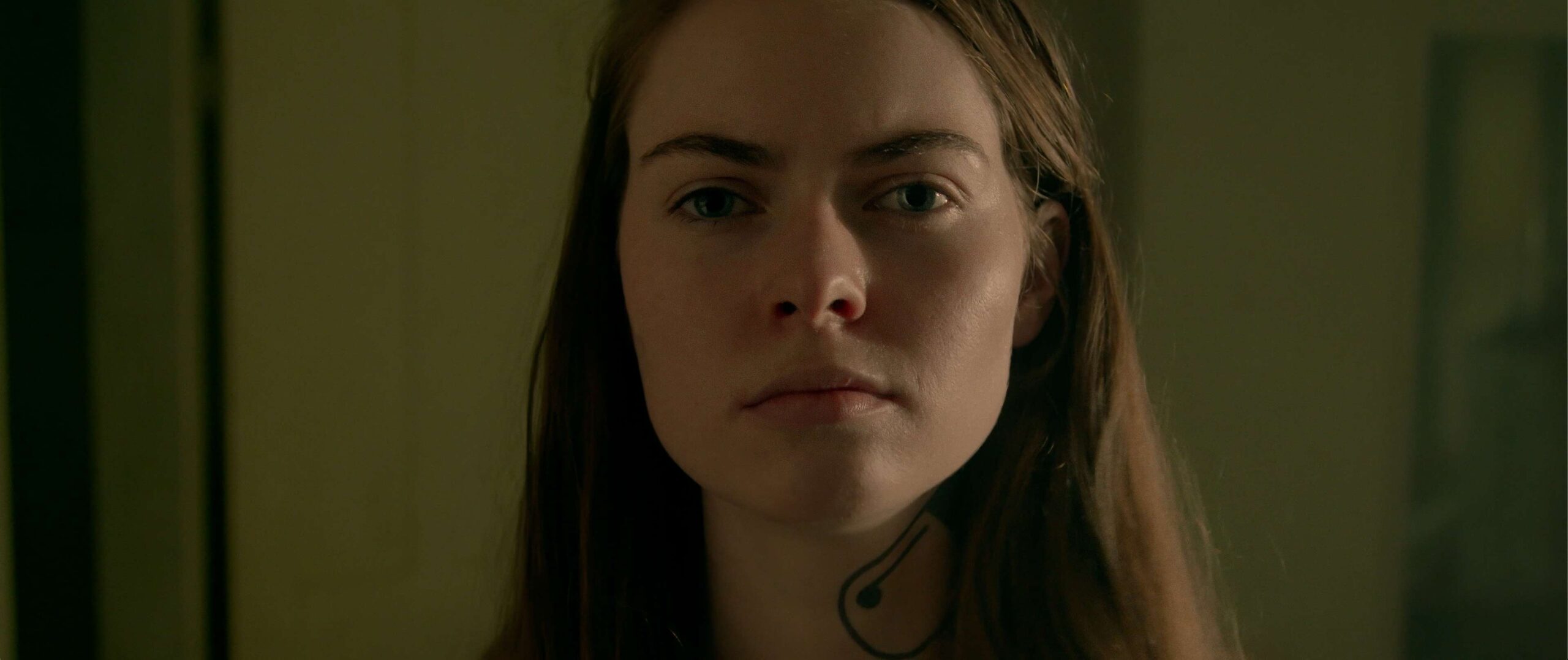
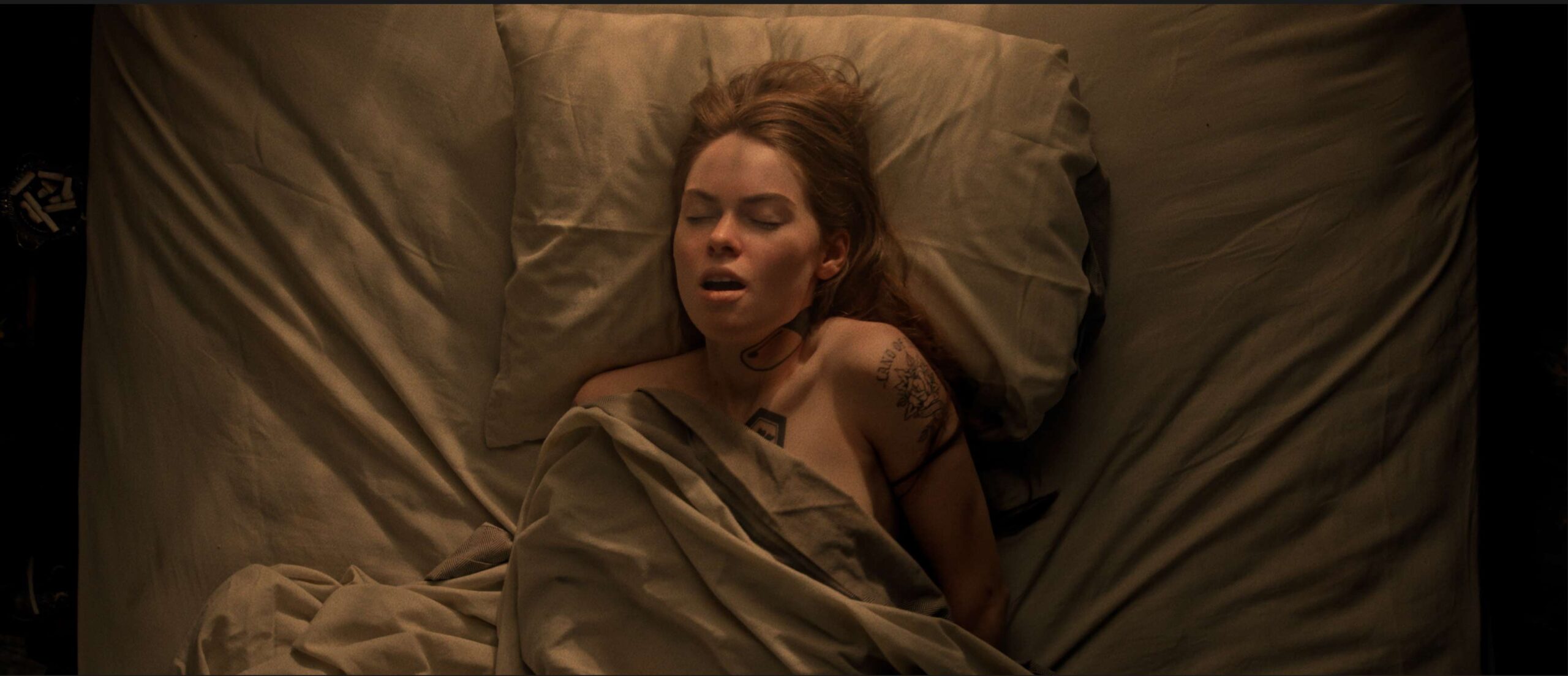
Stills from Mujō
And with good reason: Also from our community we got the feedback that Mujō is similar to Mad Max in some points (meant as a big compliment). But is the comparison fair? What did you use as a guideline for the character design of Meta and her world?
Exactly right. Mad Max was a big influence. During the pre-production stages, Steve and I created a pin board to help us visualize the characters and the world in which they live. There will definitely be some nods to Mad Max, but don’t be surprised to see some tips of the cap to other iconic films like Star Wars or Indiana Jones. I’m a big fan of Stranger Things and love how they pay homage to the films they love. We plan on paying our own tributes, in our own ways, in future episodes.
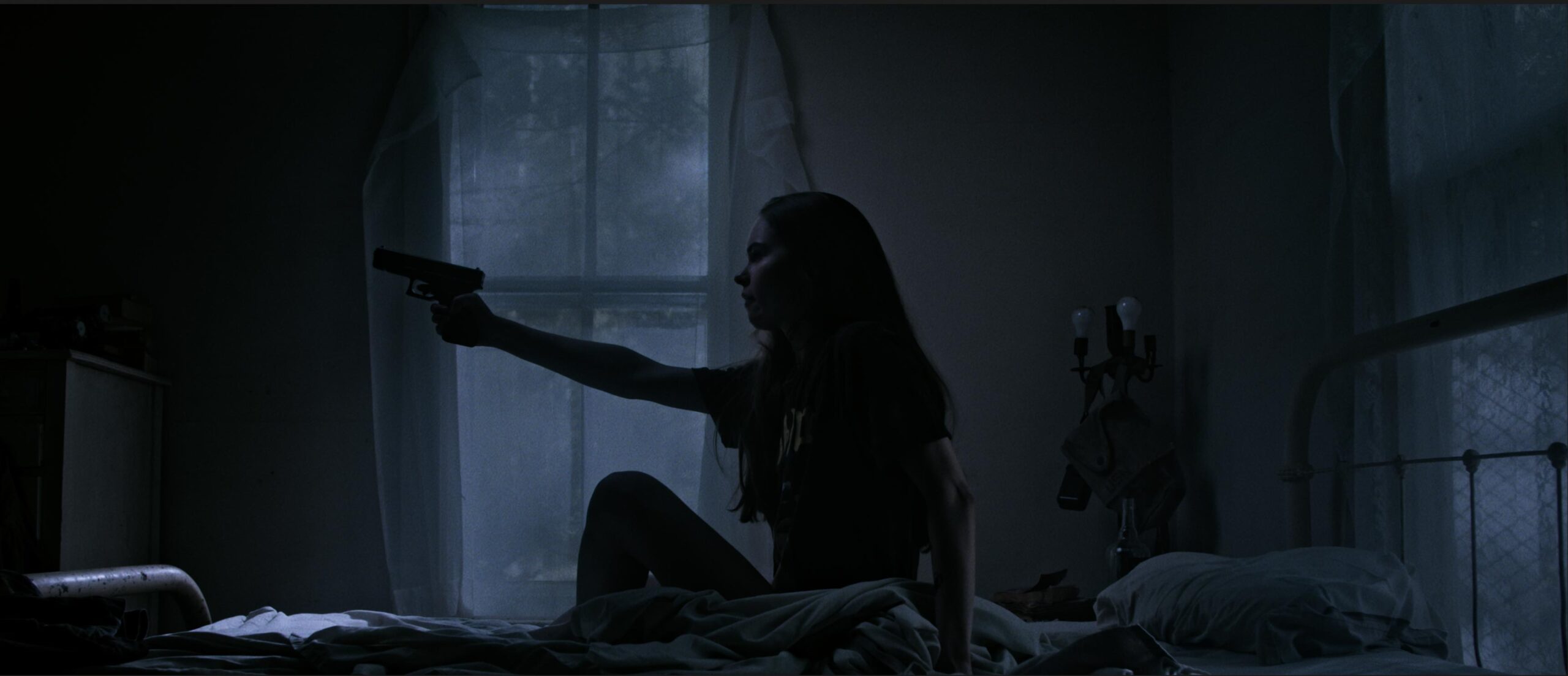
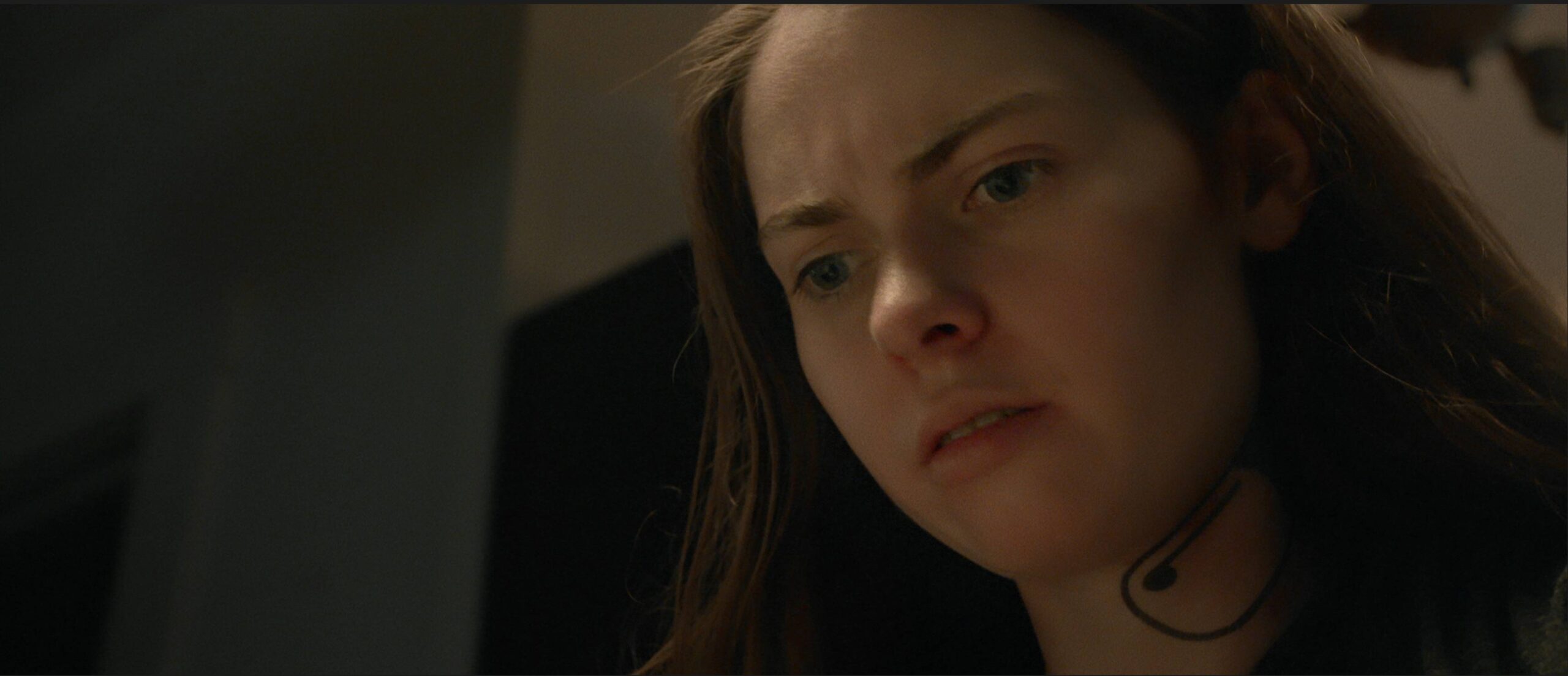
Stills from Mujō
How many days was Meta in lockdown?
56 days. We shot the clock counting down from 1 minute, but I had to actually go in digitally and edit the screen to look like it was counting down over a time period of 56 days.
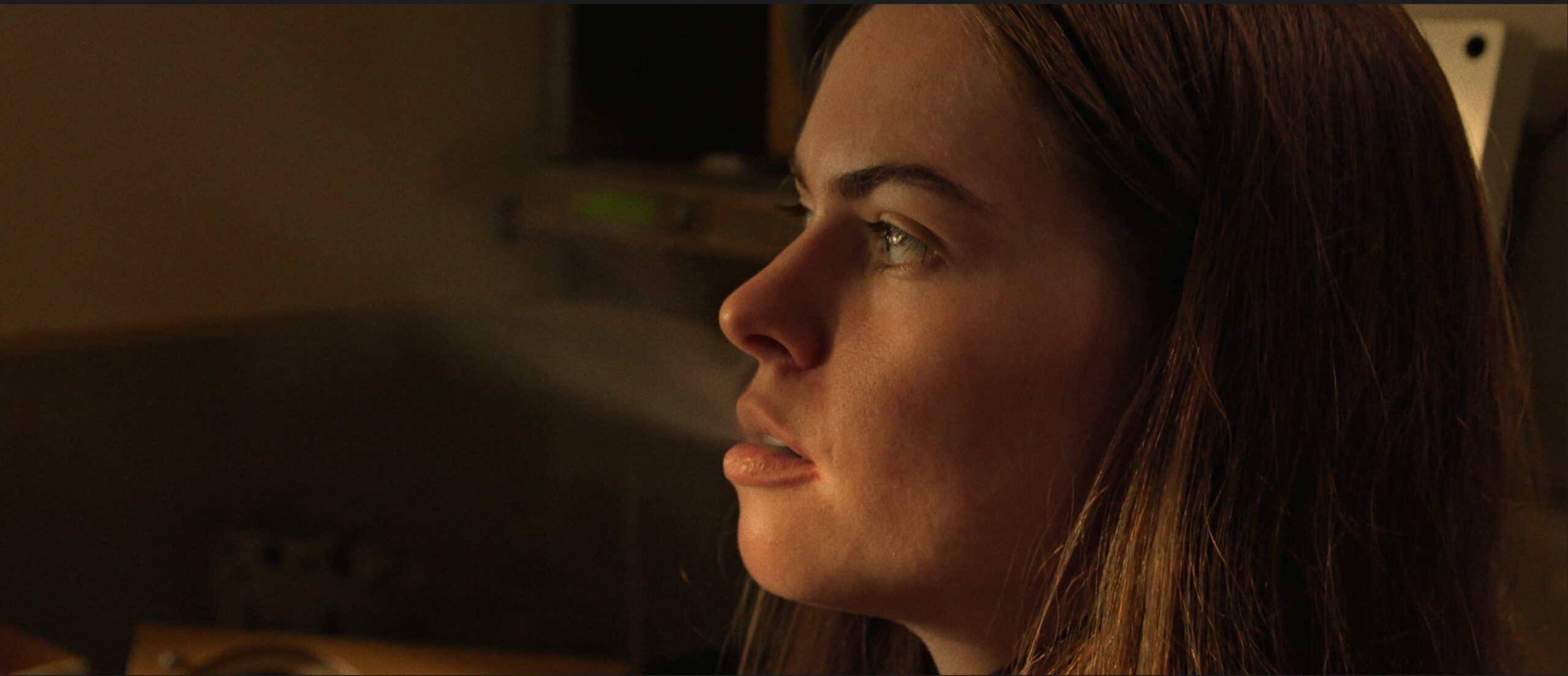
Still from Mujō
What happened before the lockdown, can you tell us something here?
I have a feeling that Steve would have my head if I gave away too much of the story at this point, but I can tell you that we will gradually understand more about what happened from episode to episode. There’s a reason why Meta (Olivia Duff, @thenoisygrl) has held herself up in isolation for months in the woods. There’s a reason why she has to wear a gas mask at certain times, but not others. There’s a reason why she has those almost prophetic dreams that she has and there’s also a reason why she drinks to avoid having said dreams. All will be revealed in its perfect timing, which is what makes this story so awesome.
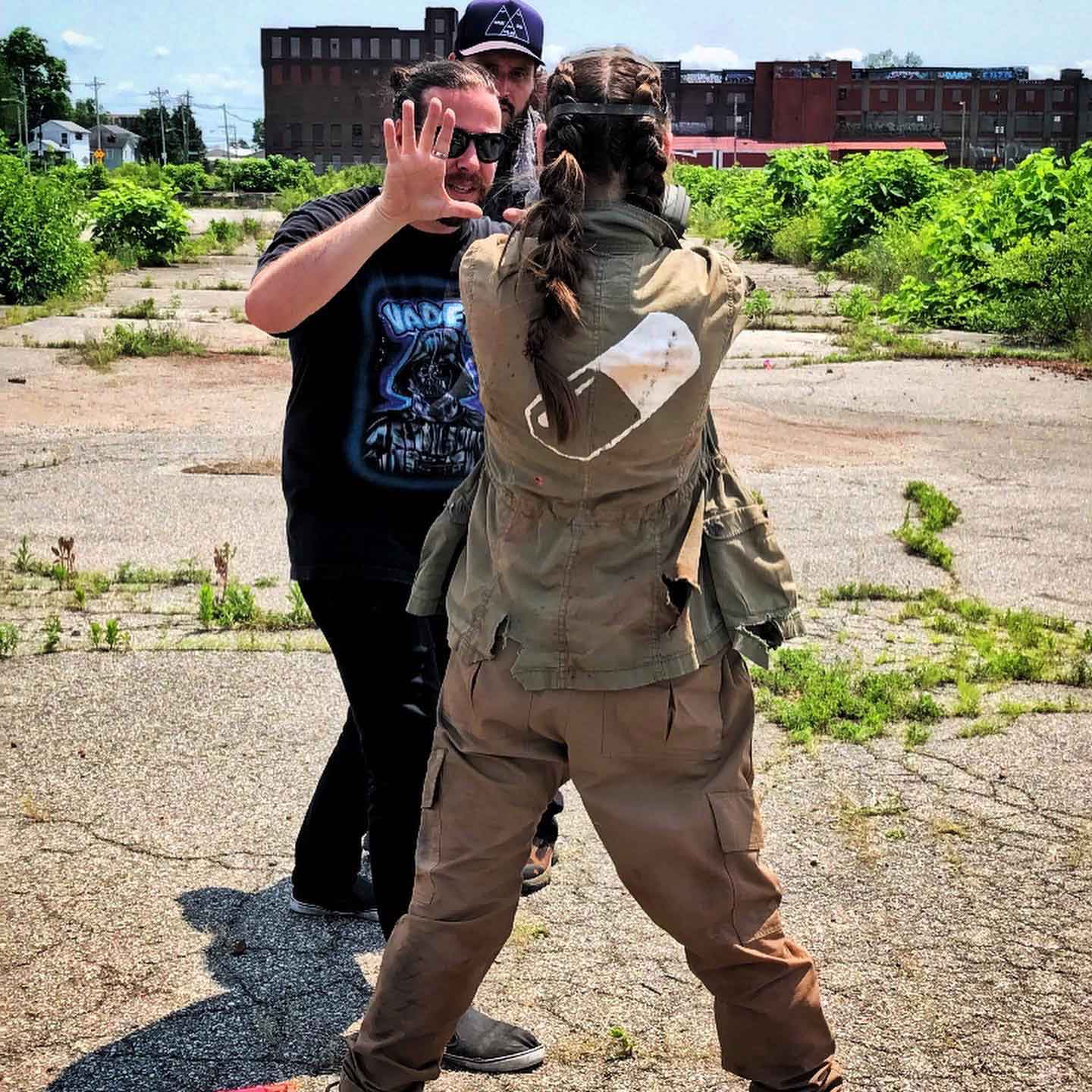
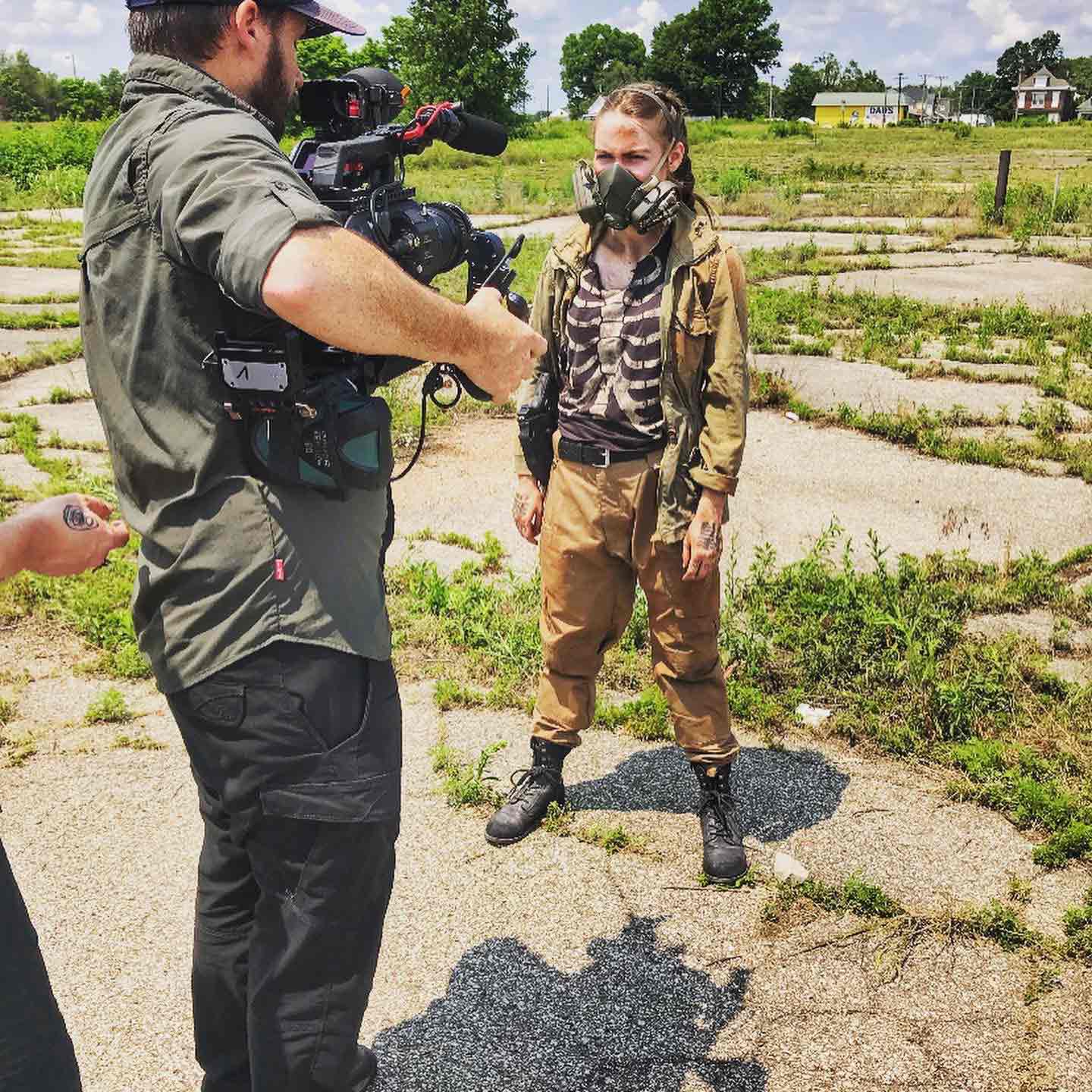
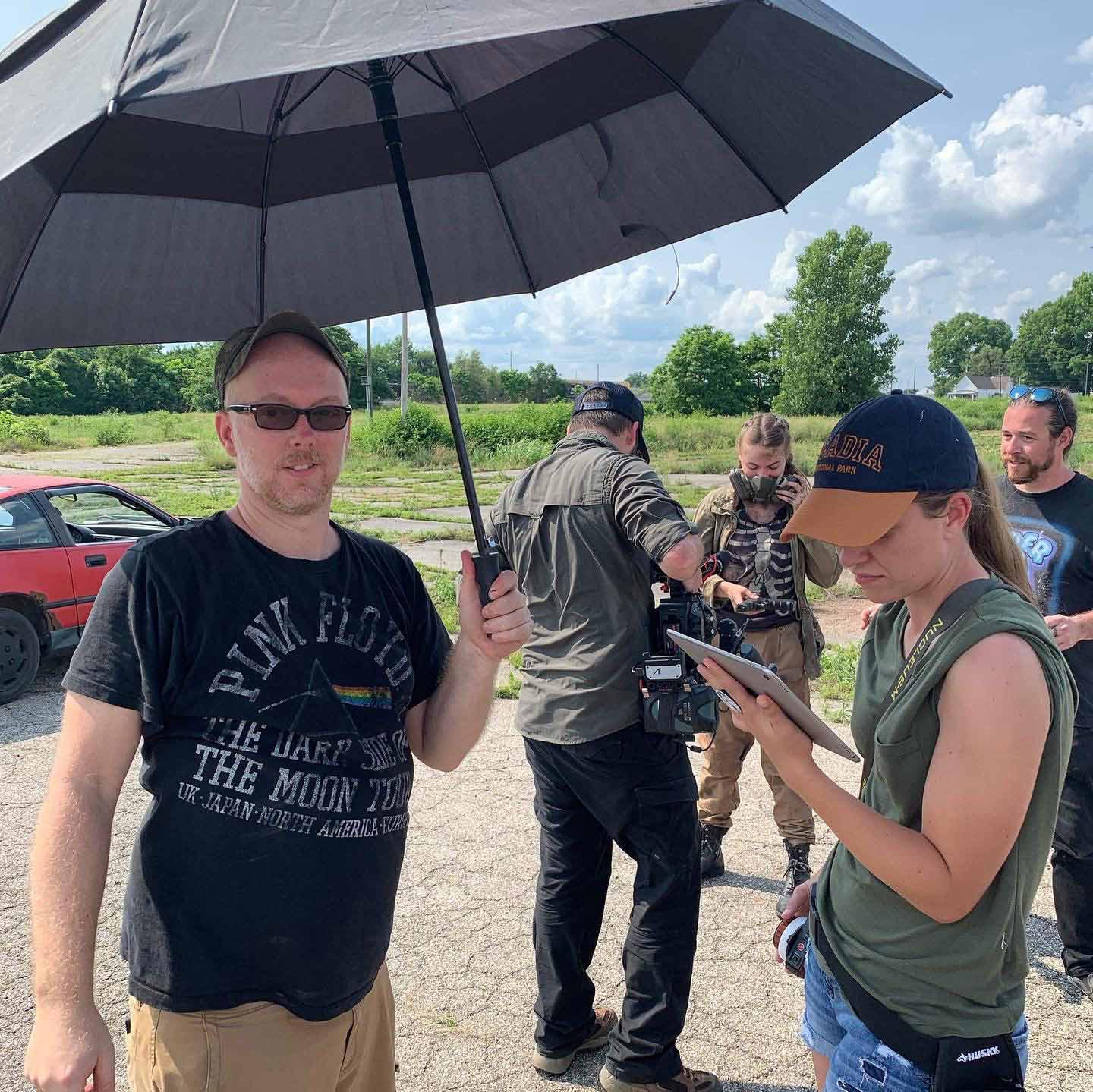
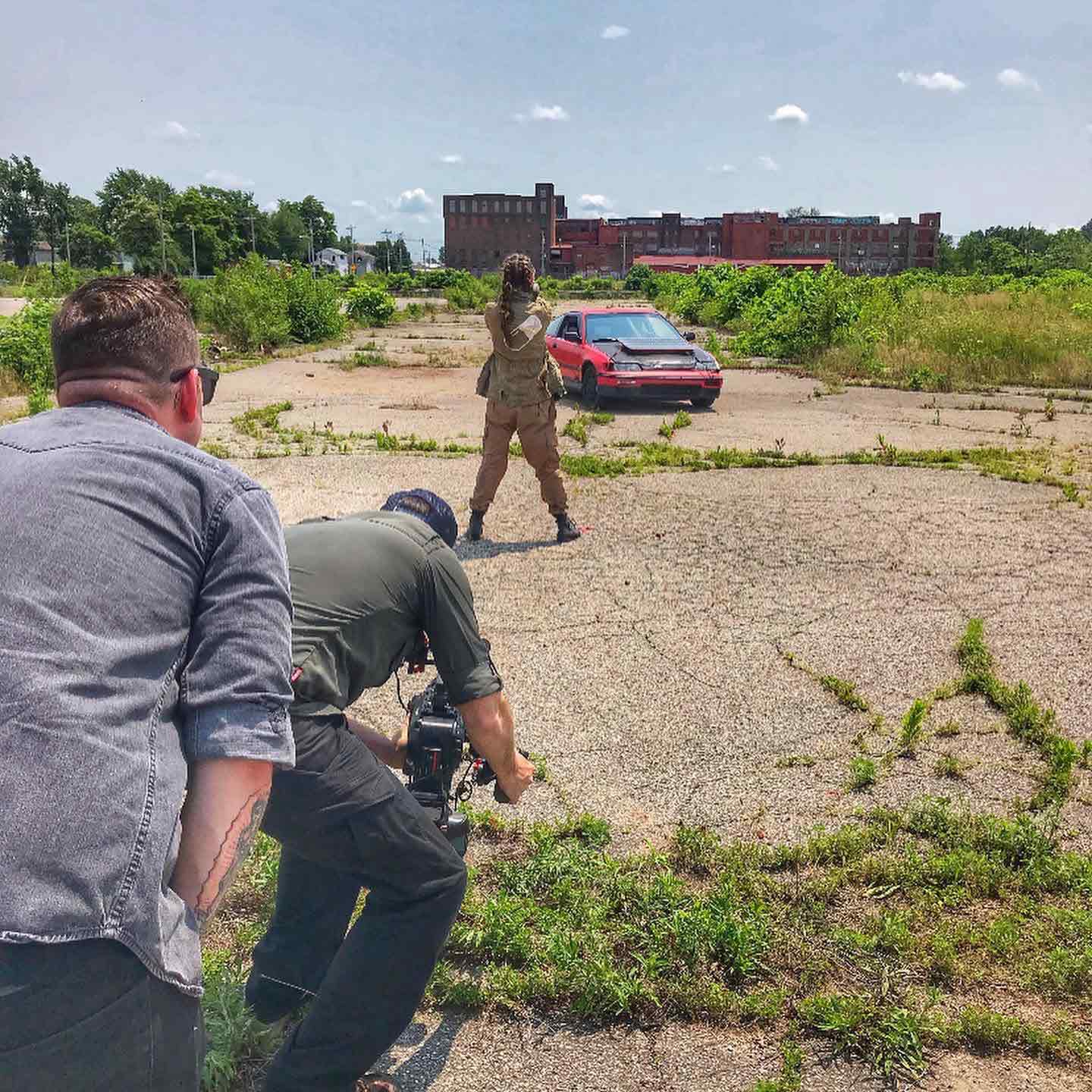
Behind the scenes of Mujō
As the editor, colorist and DP, how did you approach the overall look and tone of this sci-fi series?
We did a lot of pre-production to establish the look. Before we even started shooting, we had look books to rely on and keep us on track. In post, being a sci-fi film, we were able to play a little more and exaggerate certain scenes. Since the dream sequences were going to be throughout, I wanted to create a visual contrast between the “dream world” and reality. I wanted the dreams to have a more exaggerated and surreal tone. One of the discussions we had was whether or not to leave the particles floating in the air in since they are a little over the top. We eventually agreed to keep them in since after all, this is a sci-fi series and it helps communicate that in the end. During the color grading stage, I chose to make the colors more saturated and vibrant during dreams to really separate the two worlds. I also layered in a lens blur overtop the images using a tilt shift effect in Resolve. This narrows the field of view and communicates that we are seeing things to come. The last thing I added was a denser layer of 16mm film grain to really dirty up the image and make it feel gritty.
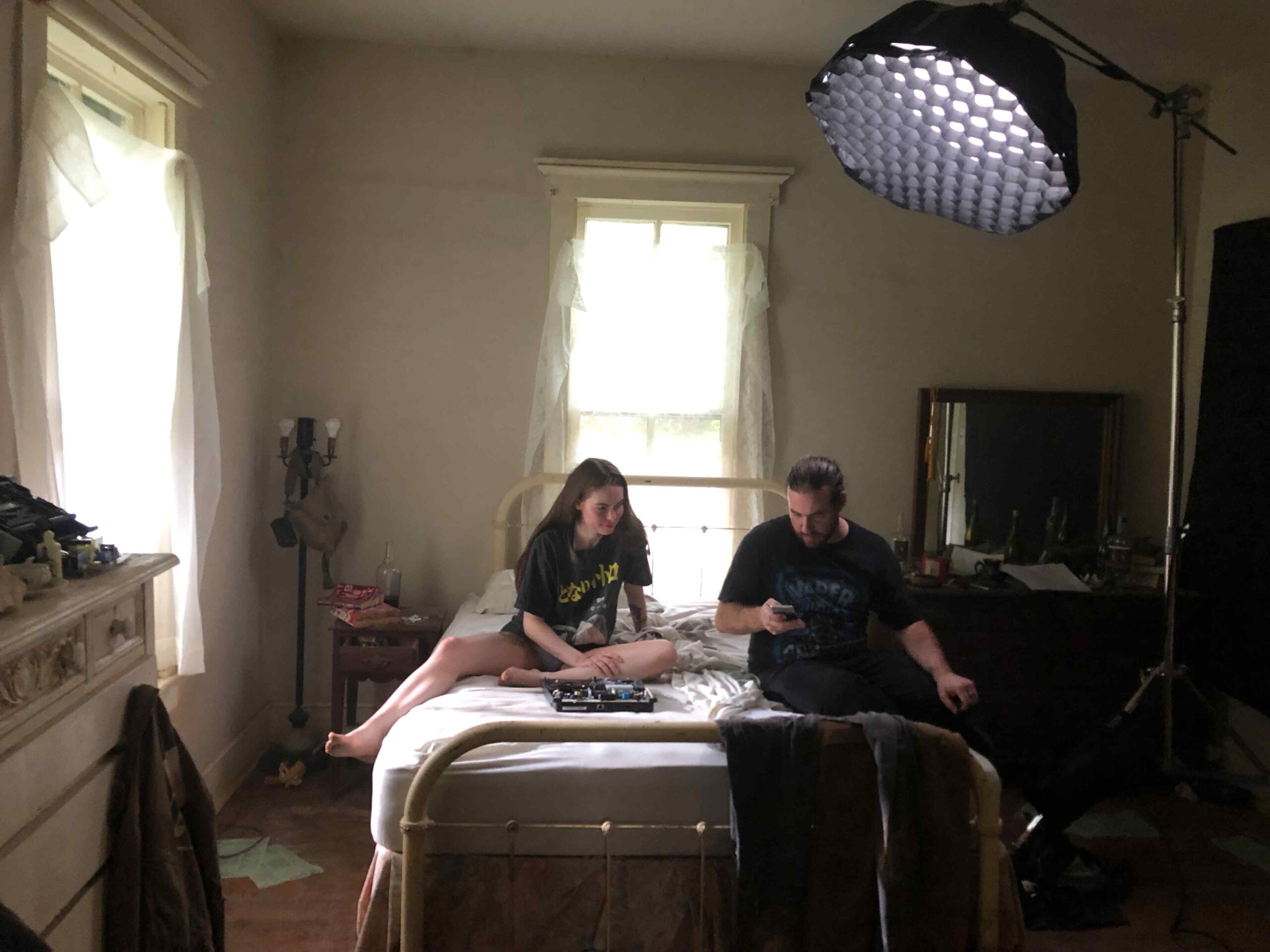
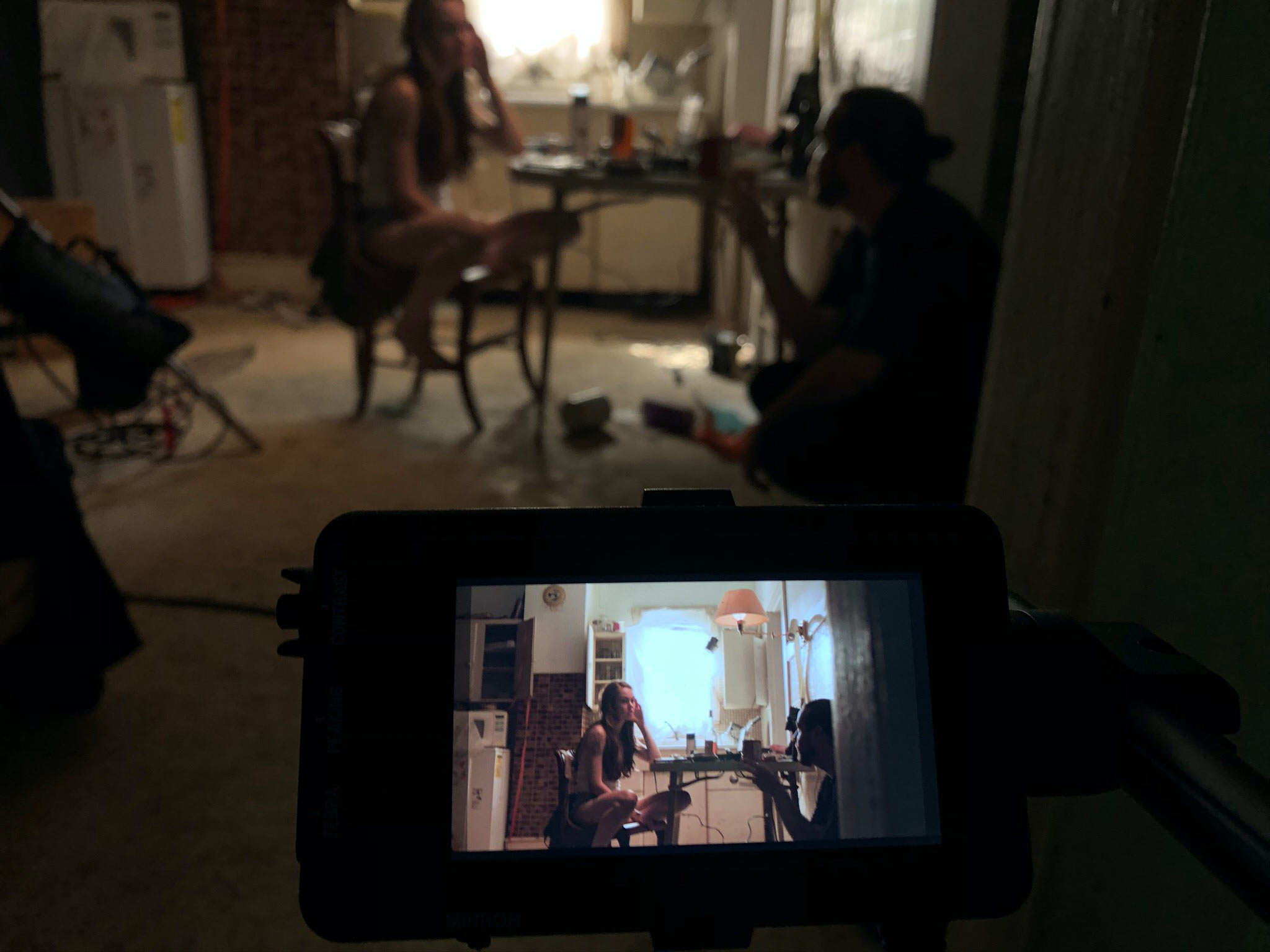
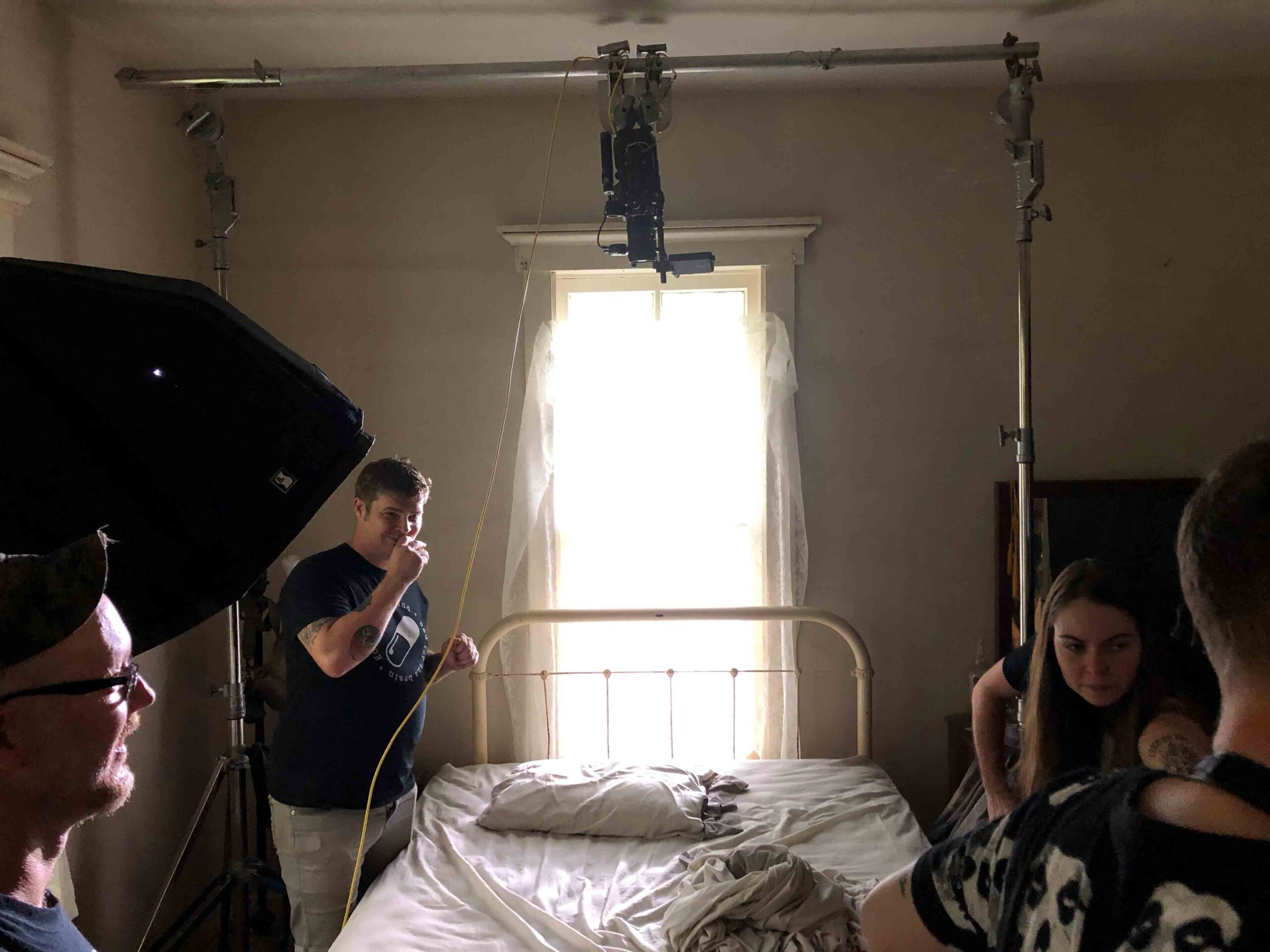
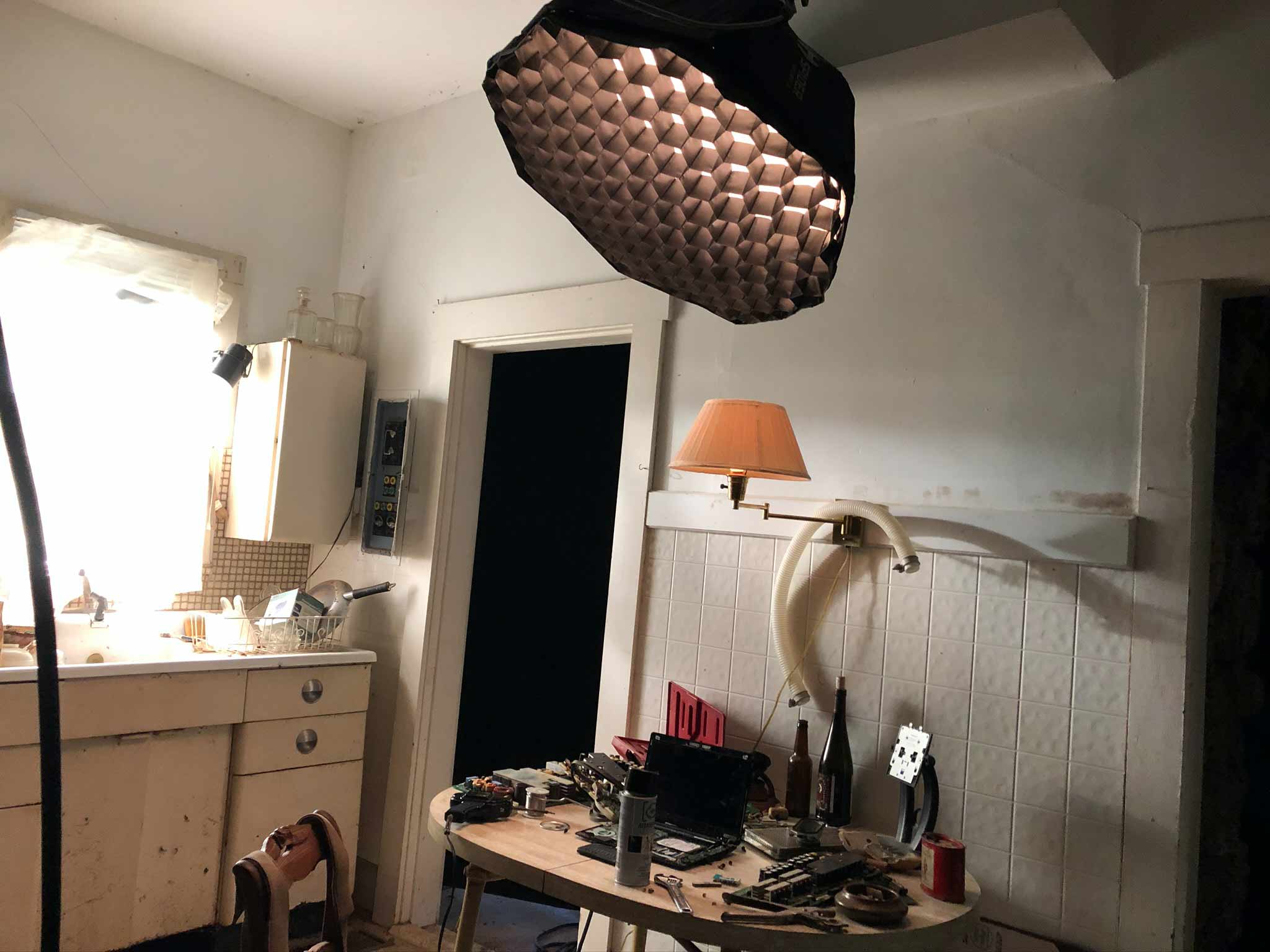
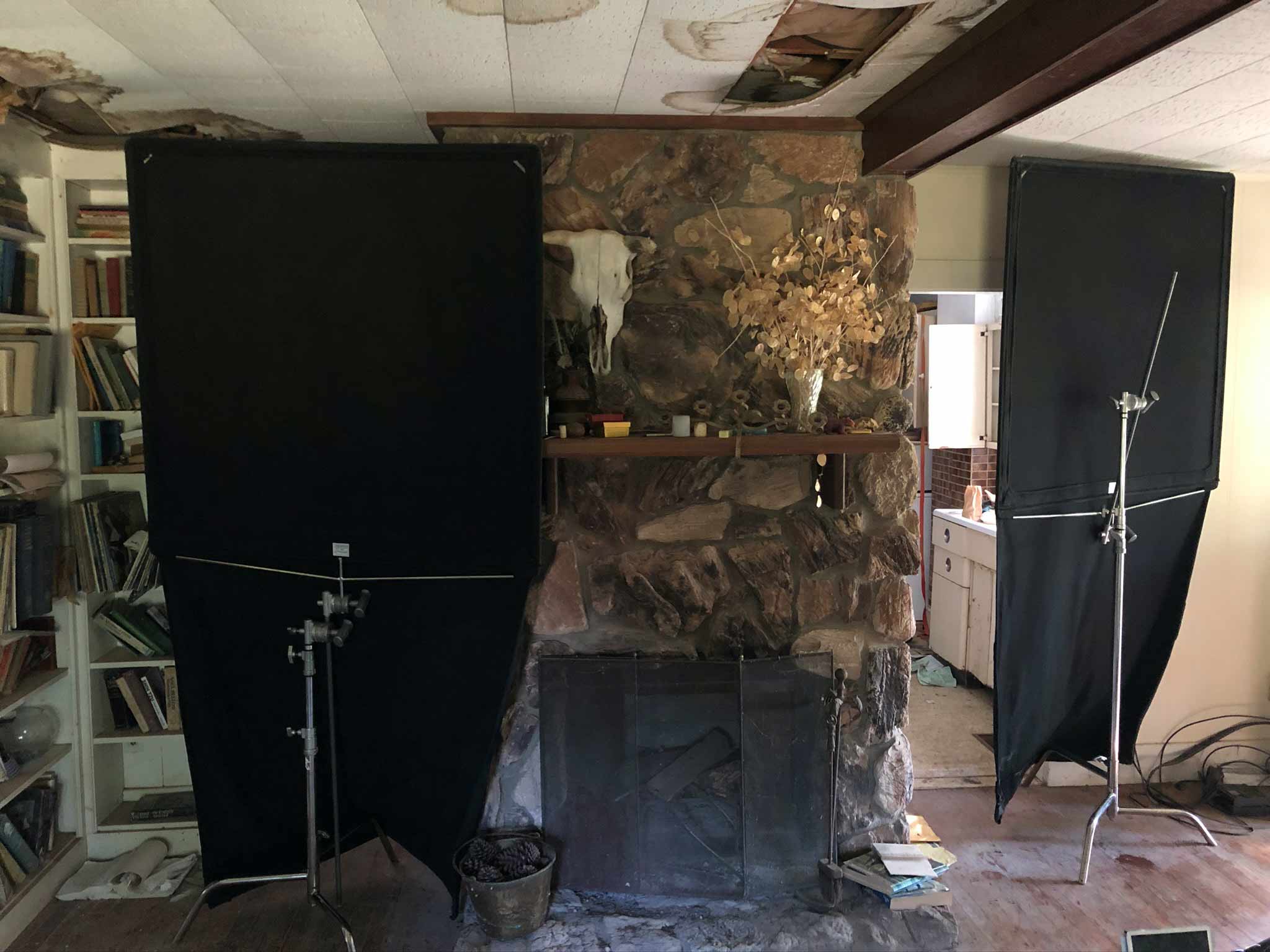
Behind the scenes of Mujō
Meta's eyes glow blue at certain times. Was there a reason for why we see that happen?
Meta’s eyes glowing blue during the dream sequences and when she wakes up was another decision made in the edit. We wanted to communicate a certain hint of a supernatural thread in the story early on without giving away too much. Not only does it look cool visually, but it also is another way to foreshadow what the viewer is in for down the road.
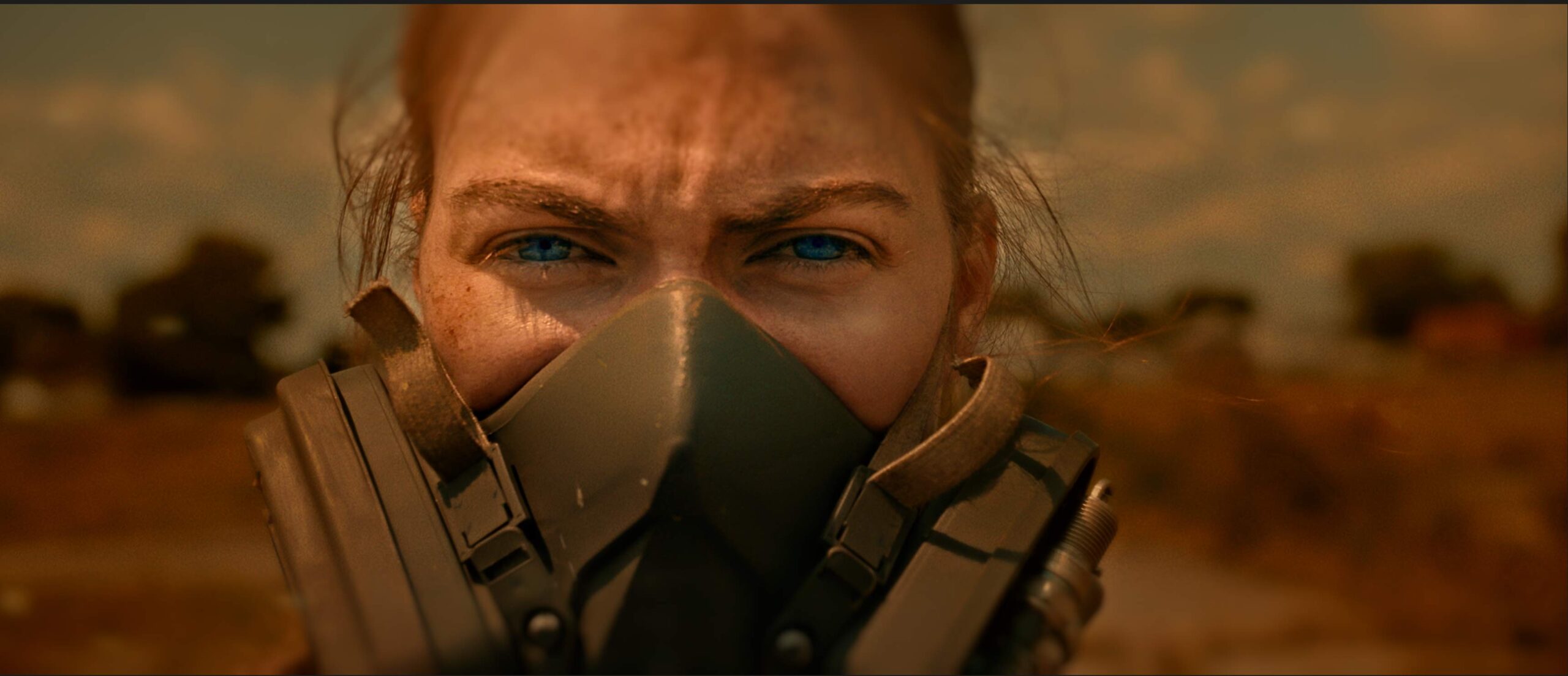
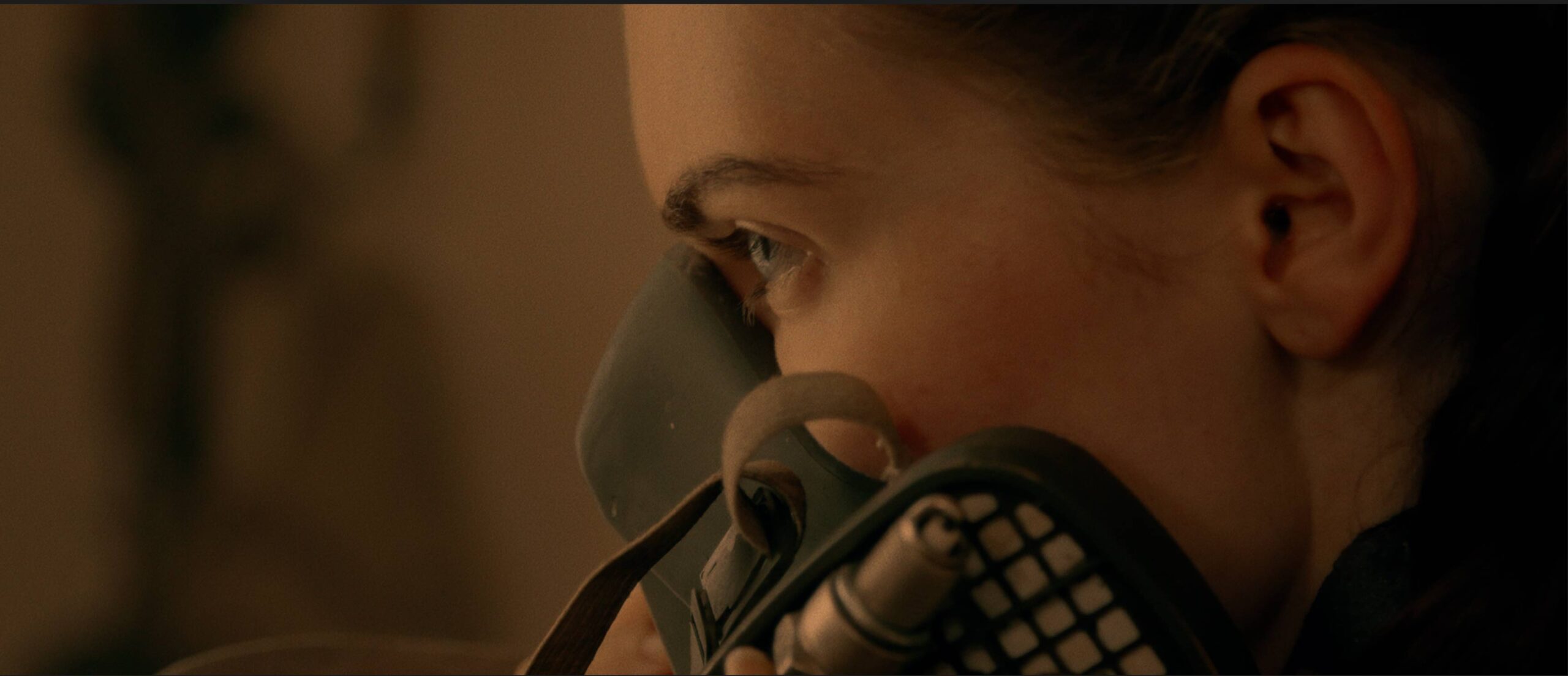
Stills from Mujō
Foreshadowing is key in building suspense. There seems to be a lot of that peppered throughout. Can you talk more about that?
We wanted to create as much foreshadowing as we could to keep this first episode engaging. We intentionally wanted to give the first episode a slow burn knowing that we needed to ‘set the table’ for the feast to come. There are so many subtle details that you would think don’t connect, but they will later on. Another example of where we used some heavy foreshadowing was when we showed there being something beyond the tree line of Meta’s property that held some mystery. Throughout the film, we communicate the notion that there is something beyond the forest that intimidates Meta and scares her. We keep that mystery up until the end where we reveal the burning cityscape in the distance as Meta sets off toward it. This also is foreshadowing what the next episode will be about as she makes her way to the city.
In the film there is always a ticking timer, what is it all about?
Think of the ticking timer as a metaphor for what Meta ultimately knows she has to do. She is isolating herself, because she doesn’t want to face reality and the ticking countdown of the timer box is a constant internal reminder that she eventually has to face her fears and leave the security of her home.
«Each tattoo on Meta’s body has a specific meaning or reference behind it.»
The tattoos Meta wears are breathtaking. What is the meaning of them, what concept and what technique did you use to make them?
The tattoos were designed by the super talented Jeremy Richie (@jeremyrichie) who also designed the bottle labels that you see throughout the film. Steve worked along-side Jeremy to custom design each tattoo on Meta’s body, each with a specific meaning or reference behind it. The tattoo designs were made into temporary tattoos that our makeup artist, Matt Goodlett (@mattgoodlettmakeup) meticulously applied to perfection using his art and magic. I’m not exactly sure what Matt did to make them look as real as they did, but he spent many days beforehand to perfect the look.
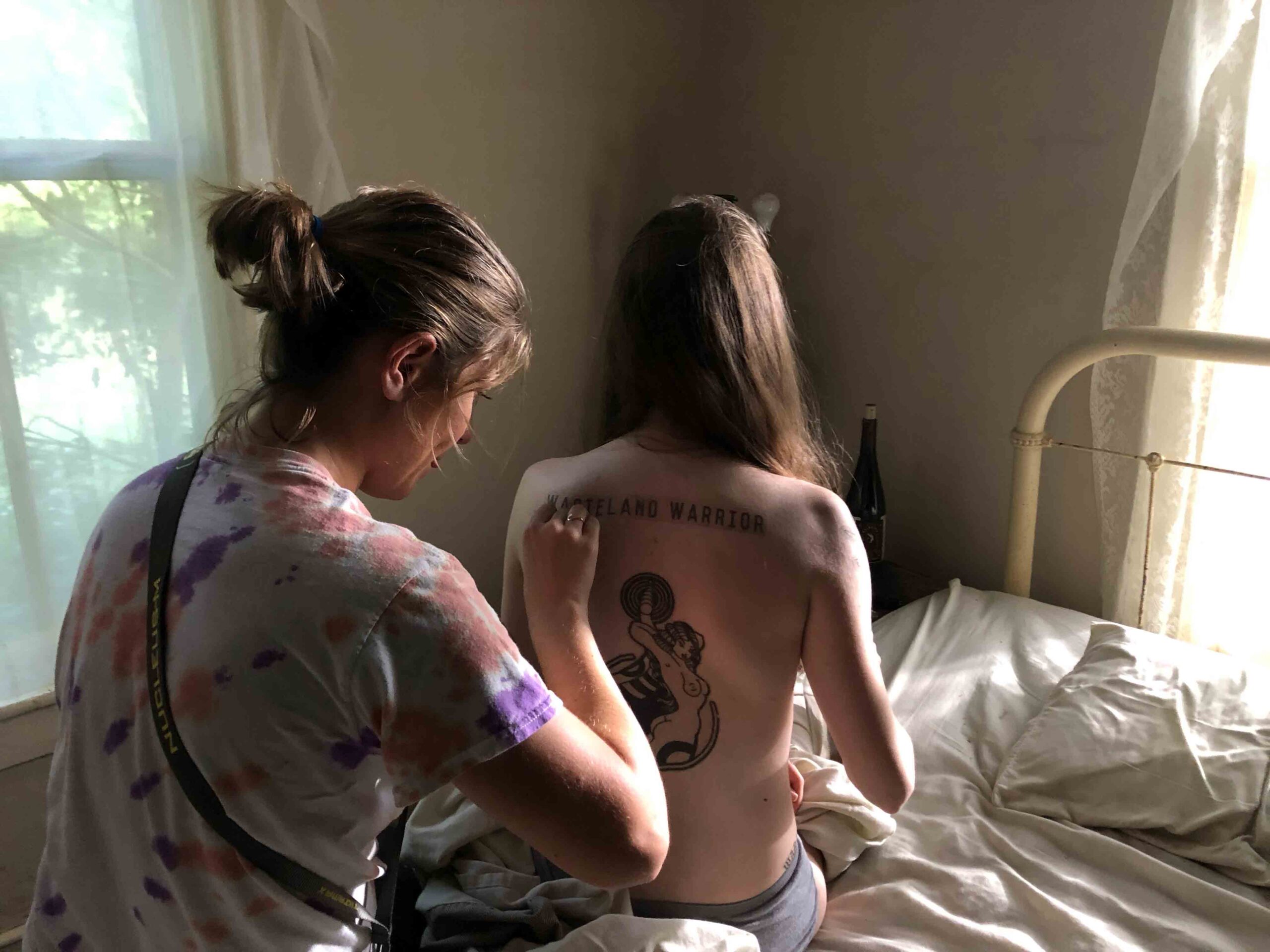
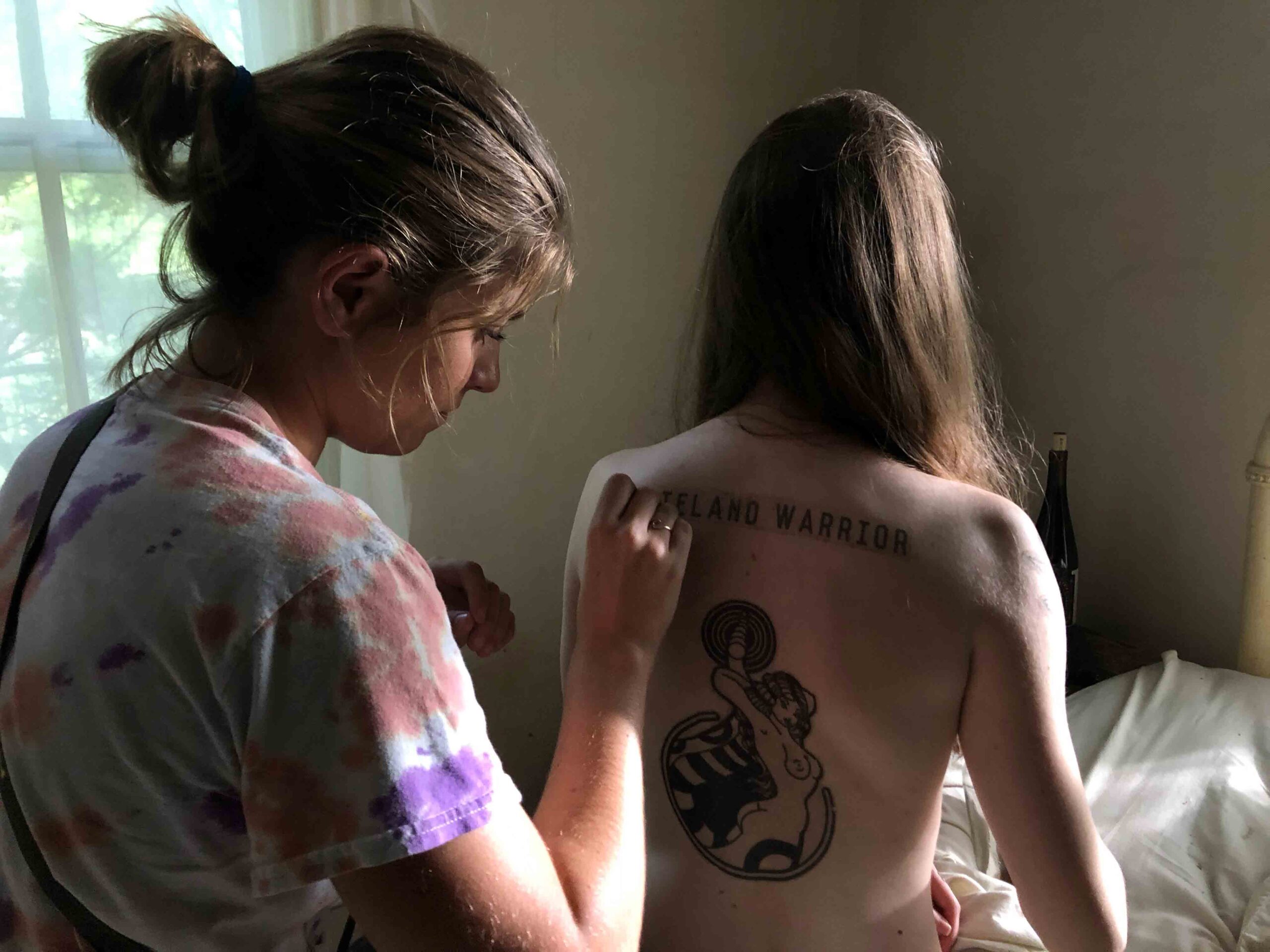
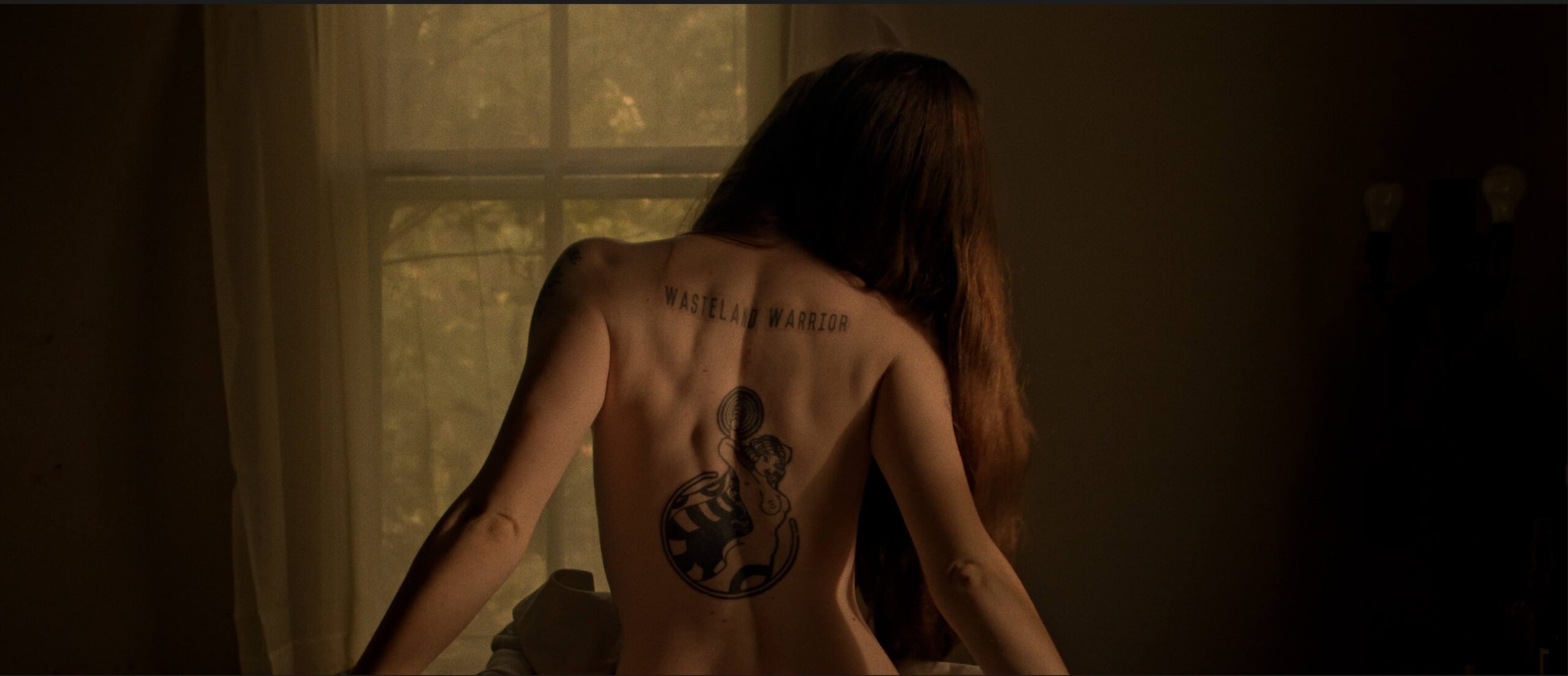
Behind the scenes of Mujō
The final drone shot revealing the burning cityscape is pretty epic! What can we expect to Meta getting into for the next episodes?
They always say to start out with a strong visual and end with an even stronger one. We knew we had to end this chapter with a dramatic shot that communicated what’s at stake and what’s to come. We wanted the viewer to be left with a lot of questions, but we also wanted to leave them hungry for more. We decided to end with a drone shot that follows Meta as she makes her way toward the tree line to communicate that she is heading toward something big.
«Expect a lot of edge of your seat action!»
We did a sky replacement and composited a dramatic burning cityscape in the background as a taste of what’s to come in the next chapter. Expect a lot of edge of your seat action! We are hoping that the visual is strong enough to peak the interest of the viewer and make them want to follow her on her journey in the next chapter.
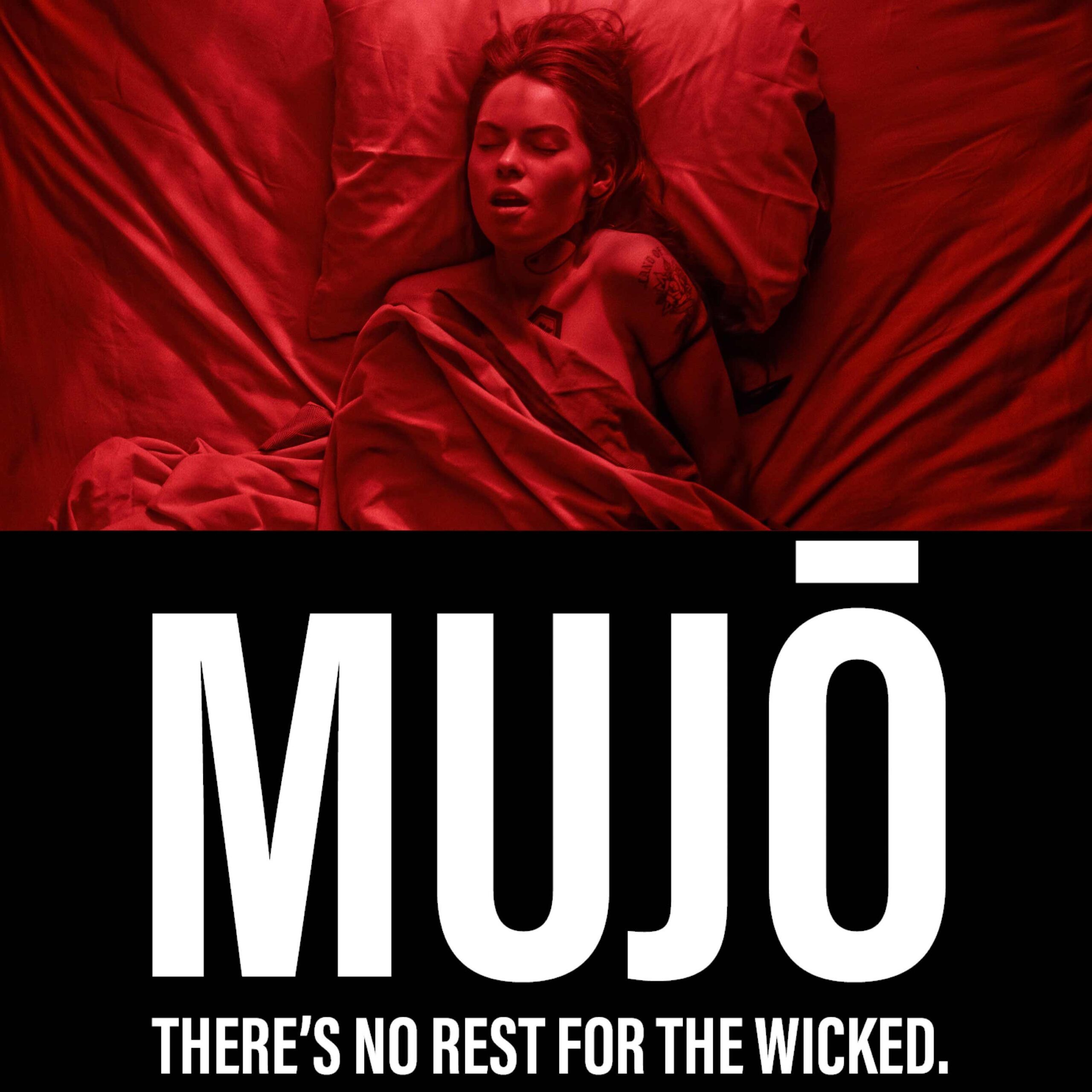
What is the next step, can you tell us something about the next chapter? How many chapters are planned?
I can tell you that the next episode will be intense! Lots of action, epic chase scenes and some mysteries will be revealed. Even more to note, we actually get to see and hear Meta talk for the first time! We labeled the first Chapter “A” for a reason. We anticipate there being 26 episodes in total. How we partition those out is still being determined, but we think it will be comparable to 1 or 2 seasons of traditional content.
How do you finance the project?
This first episode was made for around $5K as a sort of ‘proof-of-concept’. We scraped together as much as we could and the crew worked for free, because they believed in the story as much as we did. At the moment, we are marketing this first episode and trying to get it out to as many people as we can to reach other’s who see the same potential in Mujō. We know that people are loving the story already and they are asking for more episodes. We want to make more! But we also need the right people to step in and help us finance these future chapters. Whether the financing comes from crowd sourcing, executive producers, studios, or our mom’s rich dentist, we really don’t discriminate. In the end, we know we have an amazing story here and just need like-minded people to step up and get involved to help us make the rest.
Mujō is an Official Selection of Retrospective of Jupiter.
Watch Mujō
Did you like what you saw?
If you enjoyed what you saw and would like to see more, please consider making a monetary contribution to the efforts of the makers of Mujō in any amount you wish. Every single dollar contributed gets them a little closer to the next episode.
«Mujō is funded and made possible entirely by you, dear viewer. Thank you so very much.» – Steve Squall, Writer/Director


